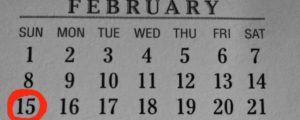The deadline to get a January 1 effective date has passed in Colorado and in most of the rest of the country (in six states you can still enroll and get coverage effective January 1). And that means that millions of people had their coverage automatically renewed on December 15.
In the 37 states that are using Healthcare.gov (Colorado is not among them), nearly 2.5 million people enrolled in coverage in the first four weeks (November 15 – December 14) of open enrollment, and 52 percent of them were people who already had a plan in 2014 and were either manually renewing it or switching to a new plan for 2015.
Then in the fifth week, from December 15 to December 19, nearly 4 million more people enrolled in a 2015 plan, and 83 percent of them were existing policy-holders from 2014. Certainly some of those people manually renewed their coverage, but nearly three quarters of them – about 2.91 million – were auto-renewed by the exchange.
In this video, I explain why auto-renewal is a bad idea for most people. In a nutshell, if the second-lowest cost silver plan in your area costs less in 2015 than it did in 2014, your subsidy will be lower in 2015 regardless of what plan you pick (which means that the amount of premium you pay will be higher). And even if you evaluated all your options last year, there are 25% more carriers in the exchanges for 2015 and you might be missing out on a plan that would work better for you… you just don’t know it’s there unless you go back and shop again each year during open enrollment.
But even if it might not be the best option on an individual basis, it’s certainly better than having everyone’s coverage lapse. And so auto-renewal is the default in most states. HHS is considering allowing enrollees to select from among other defaults instead, including auto-switching to the cheapest plan with comparable benefits, or switching to a lower-cost plan if their existing plan increases in price by more than a predetermined percentage.
Regardless of what option we have in terms of auto-renewal, there are bound to be people who are surprised by something about their coverage when January rolls around each year – either the premium change, or the plan change if they’re able to opt for auto-switching under the new HHS proposal.
The nice thing about the current open enrollment time frame is that it continues after the first of the year. People who are surprised by their premium in January will still have until February 15 to make a plan change (coverage will be effective February or March, depending on when the new enrollment is completed).
But in 2016, that will probably not be the case. In late November, HHS released proposed regulations that include the open enrollment dates going forward. The 2016 open enrollment period will be October 1 through December 15, 2015. And for all future years, that’s the schedule that is expected to be in place. While it’s good that the window will still be relatively long (2.5 months), my concern is that it will end before any of the new or renewed policies take effect.
That means that people who are auto-renewed on December 15, 2015 for 2016 coverage will have no opportunity to change their mind after their new coverage and premium are effective. While it would be great if everyone had the time and ability to carefully review their coverage each year – in advance of December 15 – and select the best plan for the new year, it’s unrealistic to assume that will be the case.
A more likely scenario is that millions of people will find their coverage auto-renewing on December 15 each year. Life just gets in the way sometimes, especially around the holidays. And while the structure of the current open enrollment period (and last year’s) allows people the chance to review their plan after the renewal has taken effect, that won’t be the case going forward if the proposed schedule is adopted (CMS is accepting comments on the proposed rule, and will issue a final regulation in 2015).
Although it does make for a busy holiday season when open enrollment spans into the new year, it’s probably better for consumers to have it structured that way, and I would urge HHS to consider the auto-renewal dilemma when setting dates for open enrollment. The current schedule (November 15 to February 15) is probably better for enrollees than the proposed schedule (October 1 to December 15).


